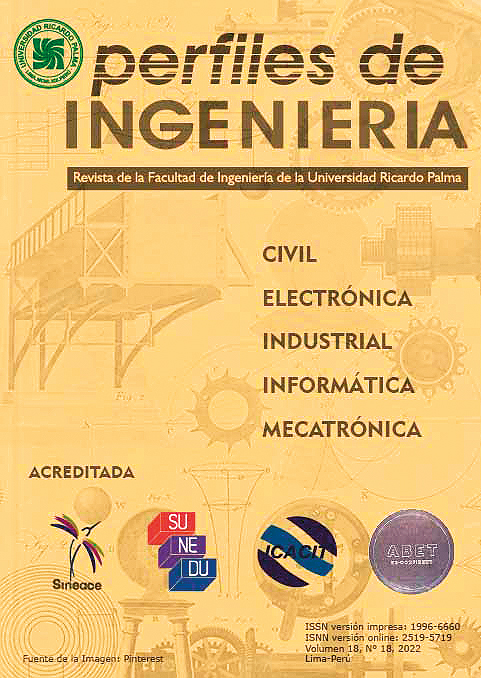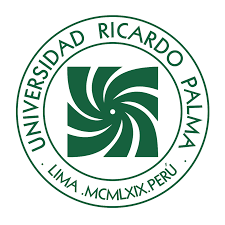Biomechanical analysis of stress distribution in medical articulated prostheses applied for a transfemoral prosthesis
DOI:
https://doi.org/10.31381/perfilesingenieria.v18i18.5406Keywords:
Articulated prosthesis, transfemoral prosthesis, stress distribution, Inventor, Ansys CFXAbstract
In this project, a study of the architecture of an articulated medical prosthesis will be carried out, specifically a transfemoral prosthesis, where the structure of the joints and distribution of efforts in it will be studied. There will also be analysis of the design and technical behavior, as well as the quality of the prosthesis against corrosion and deformation in relation to time with the help of simulations with the programs to be used that are Inventor 2022 and Ansys CFX. Those programs make use of the finite element calculation method since this is usually the most efficient for structural analysis. After doing the analysis it was possible to conclude with the results that due to the mechanical design of the leg prosthesis. This would fulfill its mission for daily use, however, the limitations could generate a deformative problem in the center of rotation when applying the prosthesis for situations not admissible of the design, such as running or jumping and sports physical activities. Each prosthesis requires a personalized design in terms of the weight, height and age of the person used, this also converges with the body mass or fat index that modifies the force to be supported by the leg, and the cost will vary greatly depending on the materials for its manufacture and the person to whom it is addressed.
Downloads
References
“Definición – Qué es Biomecánica”. Fisioonline rodo sobre fisioterapia. https://www.fisioterapia-online.com/glosario/biomecanica (accedido el 18 de junio de 2022)
"Prótesis transfemoral". Especialistas en Prótesis. https://miprotesis.mx/protesis-transfemoral/ (accedido el 18 de junio de 2022).
G. Beauce, "Índice de masa corporal, peso ideal y porcentaje de grasa corporal en personas de diferentes grupos etarios", Revista Digital de Postgrado, vol. 11, n.º 1, agosto de 2021. Accedido el 17 de junio de 2022. [En línea]. Disponible: https://doi.org/10.37910/rdp.2022.11.1.e331
Ballit, "Design and manufacturing process optimization for prosthesis of the lower limb", PhD Thesis, Université de Technologie de Compiègn, Compiègne, 2020. Accedido el 20 de junio de 2022. [En línea]. Disponible: https://www.theses.fr/2020COMP2589/abes
C. Quintero-Quiroz y V. Z. Pérez, "Materials for lower limb prosthetic and orthotic interfaces and sockets: Evolution and associated skin problems", Revista de la Facultad de Medicina, vol. 67, n. º 1, pp. 117–125, enero de 2019. Accedido el 12 de junio de 2022. [En línea]. Disponible: https://doi.org/10.15446/revfacmed.v67n1.64470
F. V. Valencia Aguirre y F. Olmedo, "Diseño y simulación de una articulación de rodilla para prótesis externa usando herramientas CAD-CAE", Biomecánica, vol. 24, pp. 39–54, 2016. Accedido el 22 de julio de 2022. [En línea]. Disponible: https://doi.org/10.5821/sibb.24.1.4833
J. Sánchez, R. J. Hernández y J. E. Torres, "Diseño mecánico para una prótesis transfemoral mediante el uso de herramientas computacionales y metodologías de diseño", Ingeniería e Investigación, vol. 32, n.º 3, pp. 14–18, diciembre de 2012.
Barr, S., & Howe, T. E. (2018). Prosthetic rehabilitation for older dysvascular people following a unilateral transfemoral amputation. Cochrane Database of Systematic Reviews, 2018(10). https://doi.org/10.1002/14651858.cd005260.pub4
"Diseño personalizado para prótesis transfemoral interbionic". Interbionic. https://interbionic.mx/protesis-transfemorales/ (accedido el 22 de junio de 2022).
"Conoce los materiales más utilizados en prótesis | Mediprax". Mediprax Artículos ortopédicos en Puebla. https://mediprax.mx/conoce-los-materiales-mas-utilizados-en-protesis (accedido el 18 de junio de 2022).
J. E. Uellendahl, "Prosthetic primer: Materials used in prosthetics", Amputee Coalition Organization, vol. 8, n.º 6, diciembre de 1998.
J. Cornejo et al., “Anatomical Engineering and 3D printing for surgery and medical devices: International review and future exponential innovations,” Biomed Res. Int., vol. 2022, p. 6797745, 2022. https://doi.org/10.1155/2022/6797745
Downloads
Published
How to Cite
Issue
Section
License
Copyright (c) 2022 Perfiles de Ingeniería

This work is licensed under a Creative Commons Attribution 4.0 International License.
In the event that the manuscript is approved for its next publication, the authors retain the copyright and assign to the journal the right of publication, edition, reproduction, distribution, exhibition and communication in the country of origin, as well as in the abroad, through print and electronic media in different databases. Therefore, it is established that after the publication of the articles, the authors may make other types of independent or additional agreements for the non-exclusive dissemination of the version of the article published in this journal (publication in books or institutional repositories), provided that it is explicitly indicated that the work has been published for the first time in this journal.
To record this procedure, the author must complete the following forms:

1.png)








